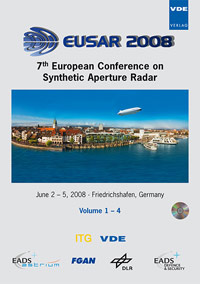Dual-Frequency and Multi-Receiver Radars for Sounding and Imaging Polar Ice Sheets
Conference: EUSAR 2008 - 7th European Conference on Synthetic Aperture Radar
06/02/2008 - 06/05/2008 at Friedrichshafen, Germany
Proceedings: EUSAR 2008
Pages: 4Language: englishTyp: PDF
Personal VDE Members are entitled to a 10% discount on this title
Authors:
Rodriguez-Morales, Fernando; Gogineni, Prasad; Allen, Christopher; Leuschen, Carl; Marathe, Kiran; Jara-Olivares, Victor; Hoch, Anthony; Li, Jilu; Ledford, John (Center for Remote Sensing of Ice Sheets, University of Kansas, USA)
Jezek, Kenneth (Byrd Polar Research Center, The Ohio State University, USA)
Abstract:
We developed radars for operation at 150 MHz with a bandwidth of 20 MHz and 450 MHz with a bandwidth of 30 MHz with multiple receivers for sounding and imaging polar ice sheets. The system consists of six receivers used to collect and digitize signals from each element of an antenna array. The antennas consisted of two fourelement dipole-arrays mounted under each wing of a NASA P-3 aircraft. We operated the radar both in sounder and imager mode during September 2007, and collected data over several flight lines over the Greenland ice sheet. We also collected data over the smooth ocean surface to calibrate the system and determine antenna pattern. The results show that we can image the ice-bed interface over a ground-swath of about 1 km. Our preliminary analysis shows that we obtained range sidelobes lower than 70 dB at 150 MHz and 60 dB at 450 MHz. Our initial results also show that loss at 450 MHz is much higher than predicted by existing models, and clutter masked weak bed echoes when the radar was flown at high altitudes both at 150 and 450 MHz. In this paper, we discuss the design and performance of the radar system including results from laboratory tests and field experiments. We also present results from data-dependent and data-independent clutter rejection algorithms and provide a comparison of theoretical and experimental attenuation estimates at both frequencies.


